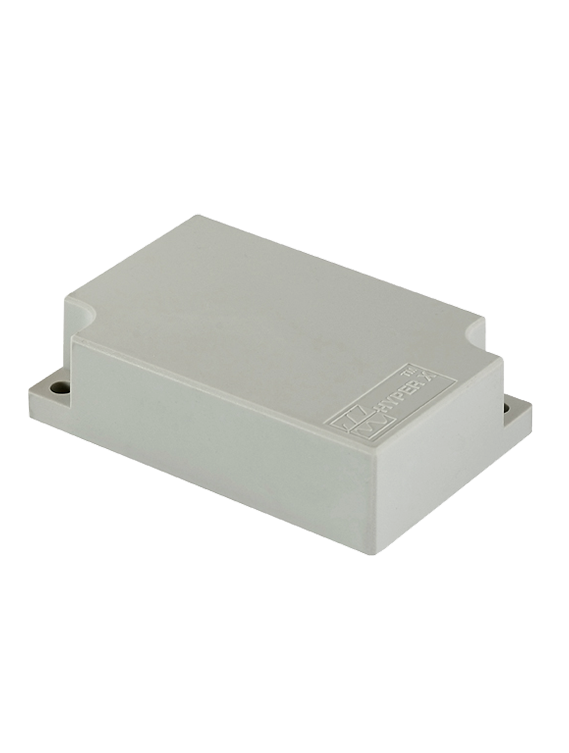Balogh Rfid
- Long Range 2,45GHz TagMaster Semi-Passive
- Long Range UHF TagMaster Passive
- Long Range UHF Passive
- HF 13,56MHz Passive
- LF 125 KHz Passive
- Optical Systems
- Device and lock control
- Accessories Reader and Tag support
- Biometrical Systems
- Signal Device
- Software
- MobilityInfo
- Bluetooth low Energy
- Controller forAccess Controll

HyperX BDG1090
2.45 GHz
Introduction
The HyperX™ BDG 1090 tag is designed to resist harsh environments: temperature, UV, immersion, shocks and vibrations. It can be mounted against a metallic surface and fixed by means of 2 holes located on the box diagonally. The electronics are powered by a lithium cell. They are coated with a special resin and protected in a grey rigid box made from Nylon loaded fibreglass. The tag is perfectly waterproof. The identification code can be programmed inside the tag memory with a computer via a special device. The programming connectors are located on the backside.Operating principle
Electromagnetic radiation characteristics in the 2.45 GHz frequency band allow high data transmission rates and directional antenna beams. Tag detection is therefore very rapid and relatively insensitive to environmental interference. The HyperX™ tag is electro-magnetically inactive when outside of the reader’s range. It's state-of-the-art feature (registered patent) is its capacity to reflect incident microwaves - a tag receiving a 2.45 GHz carrier will echo this signal, modulated by its individual identification code, back to the reader. The reader receives and processes this signal, sending the data to a host system via a standard serial interface.Tag contents
The HyperX™ tag can be progammed many times. Its memory capacity is 180 bits or 30 alphanumeric characters. The first 18 bits are reserved for use as an integrator code. This ensures that tags from different integrators do not have identical codes. The remaining 162 bits are available to be programmed freely as desired (eg. as 27 6-bit characters). The integrator can therfore select the coding scheme best adapted to Customer requirements.Operating modes
The HyperX™ tag can be read at a range of from a few cms to over 10 meters. By using microwave-based communication, data transmission times are short, from 2 to 8ms, depending on the data stored. The data is emitted in bursts which are continually generated by the tag's electronics. There are two burst modes :- "NORMAL" mode, in which the time interval between bursts is random, lying between 75 and 130ms. Using this mode, a reader can identify 5 tags in less than a second - it’s ideal for personnel identification. - "FAST" mode, in which the time interval between bursts is very short and constant - 20ms. Using this mode, a vehicle-type reader can identify a tag-equipped vehicle travelling at speeds over 100Km/h.















